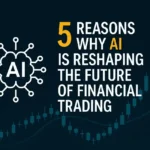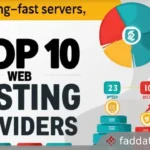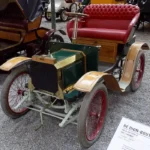Intro: Man vs. Machine – Who Trades Better?
In the high-stakes world of financial trading, speed and precision can make or break fortunes.
Over the past decade, artificial intelligence has crept its way into trading floors, hedge funds, and even personal trading apps.
But here’s the real question:
Is AI truly better at trading than human experts?
Let’s dive deep into the evolution of AI in trading and see who’s really calling the shots.
A Brief History of Algorithmic Trading
1970s: The Algorithmic Era Begins
Computers start handling large-volume trades, automating tasks and improving efficiency on Wall Street.
1987: Black Monday Shakes Things Up
On October 19, 1987, global markets plummeted. Algorithms contributed to the crash, revealing their limitations and the risks of over-automation.
1991: Ray Dalio Brings Logic to the Chaos
Bridgewater’s founder Ray Dalio embraced data-driven strategies to strip out human emotion and maximize long-term returns — planting the seeds of modern quant trading.
Early 2000s: Rise of High-Frequency Trading (HFT)
Faster machines, smarter code — trading thousands of times a second to exploit tiny price movements.
2008: Financial Crisis — The System Gets Tested
The global meltdown exposed that algorithms, like humans, aren’t immune to black swan events. Market chaos isn’t always something a machine can navigate.
2010: Flash Crash — $1 Trillion Gone in Minutes
A wild 36-minute drop on May 6th proved that ultra-fast trading could also lead to ultra-fast disasters.
2015–2018: Machine Learning Joins the Game
AI-powered systems began analyzing news, social sentiment, and even CEO speech tone — adding a new layer of intelligence to market predictions.
2020–2023: AI Goes Mainstream
Not just for hedge funds anymore. Individual traders now harness AI tools to guide their strategies and level the playing field.
AI vs. Human Traders: Who’s Winning?
How AI Is Changing the Game
- Data Analysis at Scale:
AI can sift through billions of data points — historical charts, tweets, earnings reports — faster than any human ever could. - Prediction Accuracy:
By spotting patterns and correlations invisible to the human eye, AI can make surprisingly accurate forecasts (in the right conditions). - Emotion-Free Decisions:
No greed. No fear. Just cold, calculated logic — which often leads to more consistent outcomes.
But AI Has Its Limitations
- Blind Spots in Unprecedented Events:
If the AI hasn’t “seen” it before, it might not know what to do. Think COVID-19 or geopolitical shocks. - Garbage In, Garbage Out:
Poor-quality or biased data can lead to disastrous trades — even with the most sophisticated models.
Why Human Traders Still Matter
- Intuition and Experience:
Seasoned traders can read between the lines and respond to subtle market cues in ways algorithms can’t replicate. - Understanding Context:
Humans can quickly assess how breaking news, political instability, or a CEO’s unexpected resignation might affect market sentiment.
Conclusion: The Dream Team – AI + Humans
So, is AI better than human traders?
Not quite — and not yet.
Instead of choosing sides, the smartest strategy is collaboration.
Let AI handle the data, speed, and scale — while humans apply judgment, experience, and creativity.
Because when man and machine work together, the future of trading isn’t just smart — it’s unstoppable.










